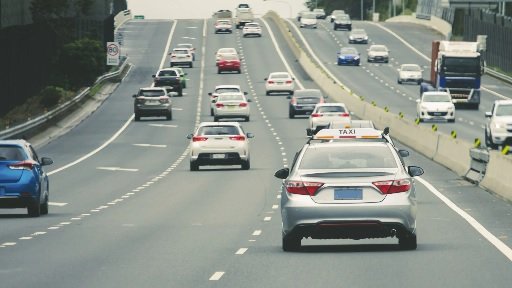Florida drivers are finally seeing real relief at renewal. After years of increases tied to litigation costs, pricier parts, and supply‑chain friction, several of the state’s largest auto insurers filed rate decreases for 2025. Legal reforms helped stabilize claim costs, creating space for competition—and opportunities for you to lower your bill without sacrificing coverage.
Filed 2025 rate decreases (selected carriers)
| Carrier | Filed Change | Comment |
| GEICO | −10.5% | Large statewide book |
| Progressive | −8.1% | Selective decreases across personal auto |
| State Farm | −6.0% | Aligns with improving loss ratios |
Individual results vary by ZIP, vehicle symbol, risk tier, and renewal month.
Figure: Florida 2025 filed auto rate cuts by major carriers (illustrative).
Turn the market shift into real savings
Treat your renewal like a small project. Work through these steps to capture the savings while keeping robust protection.
- Shop early (30–45 days pre‑renewal): Rolling effective dates mean the best pricing may land before your current term ends.
- Quote widely (5+ carriers, including a regional/mutual): Risk appetite differs by ZIP, annual miles, and ADAS features.
- Try telematics for 60–90 days: If your driving profile is favorable, keep the program at renewal.
- Re‑balance deductibles thoughtfully: Increase only to levels your emergency fund can absorb; ensure savings justify the risk.
- Fix coverage gaps: Use today’s price relief to address underinsurance—especially liability and UM/UIM limits.
For a plain‑English explainer on forces behind rising premiums and what households can do about them, see this guide to rising insurance costs for homeowners and drivers.
What a typical renewal might look like (illustrative)
| Driver Profile | Prior Premium | 2025 Filing Effect | After Smart Shopping |
| Clean record, Tampa ZIP, mid‑size sedan | $2,350/yr | −6.5% average trend → ~$2,194 | $2,050–$2,150 (bundle + telematics) |
| Two drivers incl. youthful, Orlando ZIP | $3,600/yr | Selective decreases by carrier | $3,200–$3,400 (multi‑quotes + deductibles) |
| Retiree, low miles, Jacksonville ZIP | $1,900/yr | Company‑specific cuts | $1,700–$1,800 (verified mileage + course) |
Actual outcomes vary by territory, vehicle, and timing. The table shows direction, not guarantees.
What could slow (or reverse) the downtrend
- Parts inflation and repair complexity: Advance driver‑assistance systems and EV components keep repair bills elevated; another supply squeeze could raise severity.
- Extreme weather and catastrophe losses: Active storm seasons drive comprehensive claims and pressure statewide rates.
- Macro shocks (e.g., broad tariffs on auto parts): New duties on imported components raise repair costs and can offset legal‑reform gains.
Florida’s legal reforms helped cool one of the country’s hottest auto‑insurance markets. Multiple carriers cut rates for 2025, and that’s your cue to shop widely, capture the savings, and reinvest in stronger limits and UM/UIM. Use the resources above to pressure‑test your policy before your next renewal.
Use falling prices to fix underinsurance
Lower premiums create budget room to strengthen coverage where many households are most exposed. Aim for liability limits that match your assets and income, and don’t neglect uninsured/underinsured motorist (UM/UIM) coverage.
If you’re unsure how to size coverages, this explainer clarifies the trade‑offs: why many consumers are still underinsured—and what to adjust
Under the Hood: What Florida Changed (and Why It Reduced Volatility)
Why did prices finally cool? The short version: Florida’s recent legal reforms targeted the mechanics that made claims unusually expensive. By tightening attorney fee rules, clarifying negligence standards, compressing timelines, and curbing practices that amplified medical billing, the state reduced incentives for drawn‑out disputes. Fewer outsized settlements and faster resolutions translate into lower loss severity. When claim volatility eases, carriers don’t have to price in such a large margin of uncertainty—hence the room for rate cuts.
Urban vs. Coastal: ZIP Codes Still Drive Outcomes
Even with statewide reforms, Florida remains a geographically diverse risk map. Two households can see very different renewals simply because of where they garage the car. Here’s how risk typically differs across the peninsula:
- Dense metro corridors (Miami‑Dade, Broward, Orange, Hillsborough) experience more traffic, more parking exposure, and higher theft/comprehensive claims.
- Coastal ZIPs face storm‑related losses and salt‑air corrosion risks that affect vehicle condition and repair patterns over time.
- Suburban and exurban areas with lower congestion can benefit from reduced frequency—even if parts costs are similar statewide.
Deep Dive: Telematics ROI (Return on Information)
Usage‑based insurance isn’t new, but it’s more valuable when base rates are already trending down: the discount stacks on top of market relief. To get the most from a trial program, focus on the behaviors that rating models consistently reward:
- Time of day: Fewer late‑night trips generally score better than daytime mileage with harsh maneuvers.
- Smooth inputs: Avoid hard braking and jackrabbit starts; leave more following distance and plan lane changes earlier.
- Trip selection: Batch errands and skip short, cold‑start runs when possible—frequent short trips can skew metrics.
- Phone use: Many apps down‑score active handling while driving; enable do‑not‑disturb modes to avoid accidental penalties.
Privacy tip: Review the app’s data policy and whether the program is ‘continuous’ or ‘trial.’ If the score isn’t favorable after 60–90 days, consider opting out before renewal.
Discount Stack: What a Realistic Bundle Looks Like
| Discount | Typical Range | Eligibility Tips |
| Multi‑policy (home/renters + auto) | 5–20% | Quote both lines; check lender requirements before switching home policies. |
| Telematics/UBI | 5–30% | Run a 60–90 day trial; daytime driving and smooth inputs help. |
| Safe driver / claims‑free | 5–10% | Verify accident‑forgiveness rules and lookback periods. |
| Defensive‑driving course | 5–10% | Approved providers only; upload certificate to your carrier. |
| Homeowner / affinity | 5–10% | Ask about employer, alumni, or professional associations. |
| ADAS / anti‑theft | 2–5% | Confirm VIN features are coded correctly (lane‑keep, AEB, immobilizer). |
| Paid‑in‑full / autopay | 3–7% | Avoid installment fees; set reminders for renewal dates. |
| E‑billing / paperless | 1–3% | Turn on notifications to avoid missed bills. |
Mini Case Study: How a Florida Family Turned the Cycle
Consider ‘Maria,’ a composite of several households who wrote to us this spring. She and her partner live in Orlando, both commute modest distances, and their 2019 SUV has forward‑collision warning and a recent windshield replacement. Last year, they paid $3,420 for full coverage—painful after back‑to‑back increases.
- Here’s how they approached the 2025 renewal:
Quoting window: 45 days out, they shopped 7 carriers (2 regionals).
Telematics: A 90‑day trial showed mostly daytime driving and gentle inputs.
Deductibles: They moved comp/collision from $500 to $1,000 after boosting their emergency fund.
Bundle: They added a renters policy and verified ADAS coding on the VIN.
Result: With a carrier that filed a mid‑single‑digit decrease, their renewal landed near $3,050. After the bundle and telematics discount, they closed at $2,820—still high by historical standards, but a real swing versus 2024, and with higher liability and UM/UIM limits.
Agent/Shopper Script You Can Use
When you call or chat with a carrier/agent, bring this short script to keep the process efficient and apples‑to‑apples:
- “Please quote full coverage with liability limits of ___/___/___ (or a combined single limit of ___). Include UM/UIM at the same limits.”
- “Confirm whether glass coverage includes calibration for ADAS cameras and what my out‑of‑pocket would be.”
- “Do you default to OEM or aftermarket parts on vehicles of my model year? How is that decided?”
- “Which discounts apply today based on my profile, and which could apply after I complete a defensive‑driving course or a telematics trial?”
- “If I bundle renters/home, what is the net savings after fees or policy minimums?”
Quick Glossary (So You Can Read Rate Filings Like a Pro)
- Loss Ratio: Claims paid (plus adjustment expenses) divided by premium earned. Lower ratios generally support lower rates.
- Severity: The average cost per claim. Rising severity often forces rate increases even when claim frequency is stable.
- Frequency: How often claims occur. Traffic density, weather, and theft trends drive this.
- Combined Ratio: Loss ratio + expense ratio. A number under 100% indicates underwriting profitability.
- Effective Date: When a new rate filing applies to new business or renewals; these dates differ by company.
- Territory Factor: Adjustment applied to your ZIP/region to reflect local risk.
- Symbol: Vehicle rating code capturing repair costs and safety/claim behavior for that make/model.
- UM/UIM: Uninsured/Underinsured Motorist coverage—crucial protection when the at‑fault driver has little insurance.
Bottom line: Florida’s reforms lowered volatility, and carriers responded. Don’t rely on averages—use the playbook above to engineer your own outcome, lock in savings, and upgrade protection while the market is finally giving drivers some breathing room.


